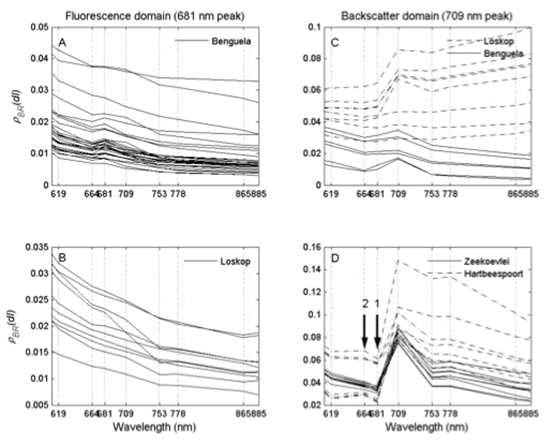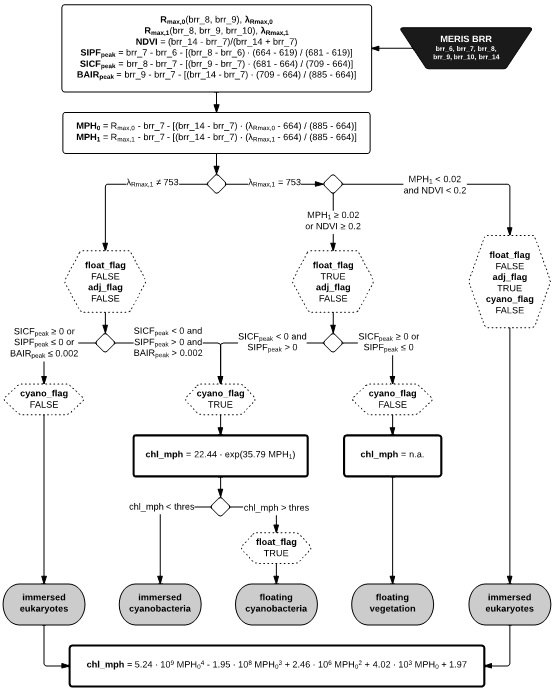<<!-- ~ Copyright (C) 2014 Brockmann Consult GmbH
(info@brockmann-consult.de) ~ ~ This program is free software; you
can redistribute it and/or modify it ~ under the terms of the GNU
General Public License as published by the Free ~ Software
Foundation; either version 3 of the License, or (at your option) ~
any later version. ~ This program is distributed in the hope that
it will be useful, but WITHOUT ~ ANY WARRANTY; without even the
implied warranty of MERCHANTABILITY or ~ FITNESS FOR A PARTICULAR
PURPOSE. See the GNU General Public License for ~ more details. ~ ~
You should have received a copy of the GNU General Public License
along ~ with this program; if not, see http://www.gnu.org/licenses/
-->
The Maximum Peak Height (MPH) algorithm exploits
bottom-of-Rayleigh reflectance peaks in the red and near-infrared
bands above a baseline, which is drawn between the bands at 664nm,
and 885nm (Matthews et al., 2012). This baseline technique is
basically the same used in the Fluorescence Line Height (FLH) and
Maximum Chlorophyll Index (MCI) algorithms (Gower et al.,
1999).
Different reflectance peak positions occur mostly as a
consequence of pigment concentration levels, and these peaks'
heights depend on specific optical drivers.

For the most common water types, MPH selects a suitable baseline
using a sequence of predefined conditions and thresholds.

Note that this diagram shows the MERIS BRR bands with their
original names (brr_*). They were changed to 'rBRR_*' in the SNAP
Rayleigh Correction processor, and the mapping from the required
MERIS to OLCI bands is as follows:
| 619 |
brr_6 (rBRR_06) |
rBRR_07 |
| 664 |
brr_7 (rBRR_07) |
rBRR_08 |
| 681 |
brr_8 (rBRR_08) |
rBRR_10 |
| 709 |
brr_9 (rBRR_09) |
rBRR_11 |
| 753 |
brr_10 (rBRR_10) |
rBRR_12 |
| 885 |
brr_14 (rBRR_14) |
rBRR_18 |
References
- Matthews, M. W., S. Bernard and L. Robertson:
An Algorithm for Detecting Trophic Status (chlorophyll-A),
Cyanobacterial-Dominance, Surface Scums and Floating Vegetation in
Inland and Coastal Waters
- Matthews, M. W. and D. Odermatt:
Improved algorithm for routine monitoring of cyanobacteria and
eutrophication in inland and near-coastal waters
(https://doi.org/10.1016/j.rse.2014.10.010)
- Gower, J.F.R., R. Doerffer, and G.A. Borstad:
Interpretation of the 685nm peak in water-leaving radiance
spectra in terms of fluorescence, absorption and scattering, and
its observation by MERIS



